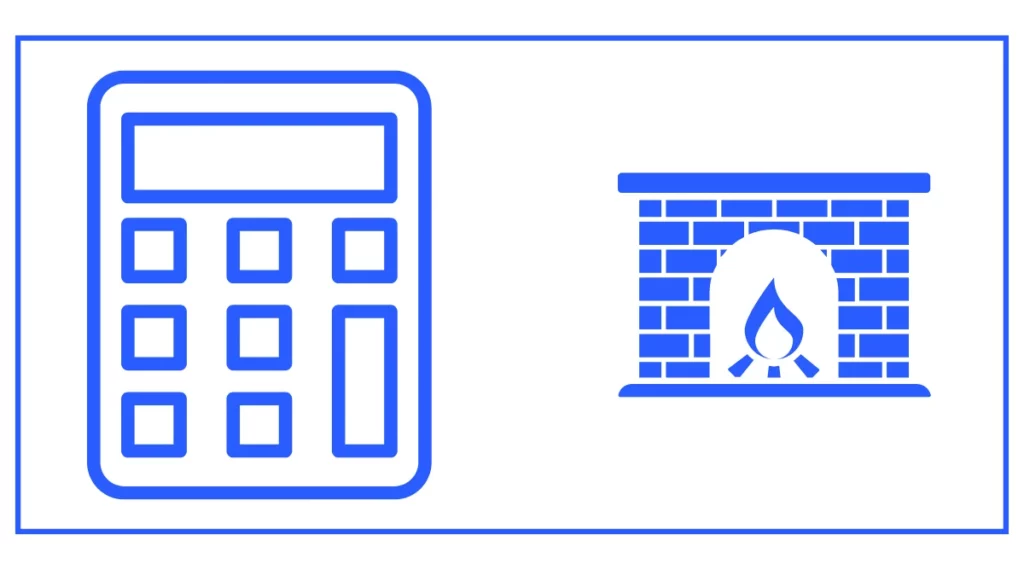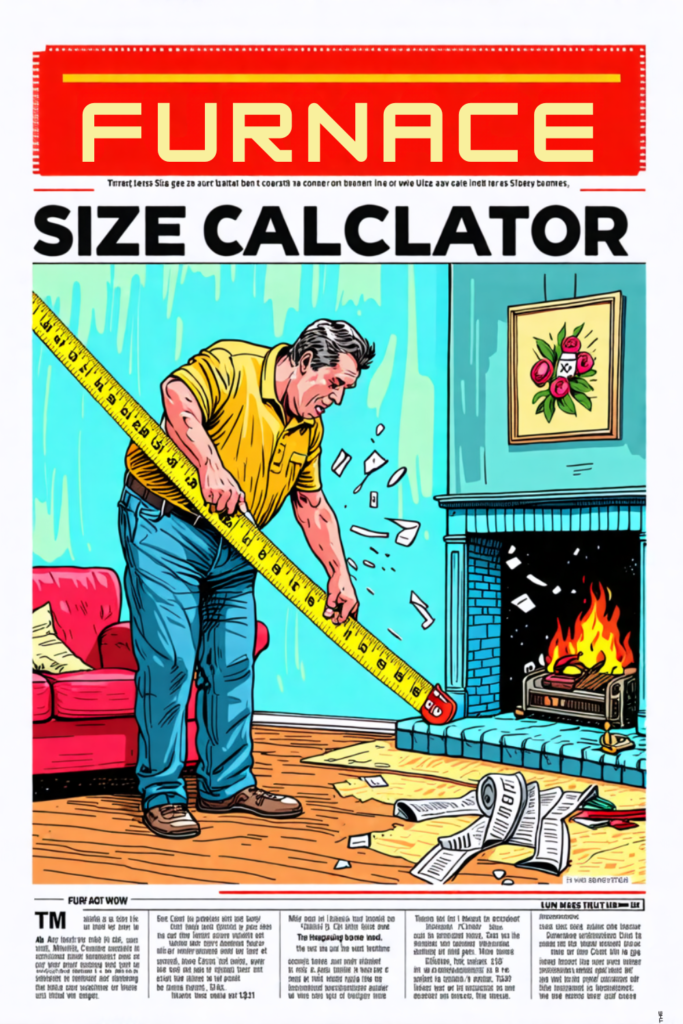Furnace Size Calculator
Minimum capacity: BTU/h
Maximum capacity: BTU/h
Are you looking for a good furnace?
To find a perfectly sized furnace, you must consider your climate zone, room area, insulation type, and sunlight exposure.
This furnace size calculator helps you find the correct size of the furnace for your room.
Choose your climate zone, room area in m², insulation ( Light, average, and heavy), and sunlight exposure (shaded room, sunny room, or neither shaded nor sunny).
The calculator will show the maximum and minim capacities of the furnaces in BTU/h that your need.

You might want to calculate the number of bricks or sand needed for your construction projects.
Why Furnace Size Matters
Selecting the correct furnace size is essential for several reasons:
- Energy Efficiency: A properly sized furnace operates more efficiently, consuming less energy and reducing utility bills.
- Comfort: The right size furnace ensures consistent heating throughout your home, eliminating cold spots and temperature fluctuations.
- Longevity: An appropriately sized furnace experiences less wear and tear, potentially extending its lifespan.
- Cost-Effectiveness: Choosing the correct size can save money on both initial installation and long-term operating costs.
Understanding BTUs: The Measure of Heating Capacity
Before delving into furnace size calculators, it’s essential to understand the unit of measurement used for heating capacity: the British Thermal Unit (BTU).
What is a BTU?
A BTU is defined as the amount of heat required to raise the temperature of one pound of water by one degree Fahrenheit. In the context of furnaces, BTUs per hour (BTU/h) indicate the heating output of the unit.
How BTUs Relate to Furnace Size
Furnace sizes are typically expressed in BTUs per hour. For example, a furnace with a heating capacity of 80,000 BTU/h can produce 80,000 BTUs of heat in one hour of operation.
Factors Considered in Furnace Size Calculations
Furnace size calculators take into account several factors to determine the appropriate heating capacity for a home:
- Square Footage: The total area of the space to be heated is a primary consideration.
- Climate Zone: Different regions have varying heating requirements based on average temperatures and weather patterns.
- Insulation Quality: Well-insulated homes require less heating capacity compared to poorly insulated ones.
- Ceiling Height: Higher ceilings increase the volume of space to be heated, affecting the required BTUs.
- Windows and Doors: The number, size, and quality of windows and doors impact heat loss.
- Home Orientation: Homes with southern exposure may require less heating than those with northern exposure.
- Number of Occupants: More people in a home generate additional body heat, potentially reducing heating needs.
How Furnace Size Calculators Work
Furnace size calculators use algorithms that consider the factors mentioned above to estimate the required heating capacity. Here’s a simplified overview of the process:
- Input Data Collection: Users enter information about their home, including square footage, location, insulation quality, and other relevant factors.
- Climate Zone Analysis: The calculator considers the home’s location and corresponding climate zone to determine baseline heating requirements.
- Heat Loss Calculation: Based on the input data, the calculator estimates the total heat loss of the home, accounting for factors like insulation, windows, and doors.
- BTU Requirement Determination: The calculator converts the heat loss calculation into the required BTU/h to maintain a comfortable indoor temperature.
- Furnace Size Recommendation: Based on the calculated BTU requirement, the calculator suggests an appropriate furnace size range.
Using a Furnace Size Calculator: Step-by-Step Guide
To illustrate how a furnace size calculator works, let’s walk through a typical process:
Enter Home Details:
- Input the square footage of your home
- Select your climate zone or enter your location
- Specify the number of floors in your home
Provide Insulation Information:
- Rate your home’s insulation quality (poor, average, good)
- Indicate the type and condition of windows
Consider Additional Factors:
- Enter ceiling height if it differs from standard 8-foot ceilings
- Specify the number of occupants
- Indicate any large, heat-generating appliances
Review Results:
- The calculator will provide a recommended BTU range for your furnace
- Some calculators may suggest specific furnace models within that range
Interpret the Results:
- Consider the lower end of the range for mild climates or well-insulated homes
- Opt for the higher end of the range for colder climates or less efficient homes
Common Mistakes in Furnace Sizing
While furnace size calculators are helpful tools, it’s important to avoid common pitfalls in the sizing process:
- Oversizing: Many homeowners believe that bigger is better when it comes to furnaces. However, an oversized furnace can lead to short cycling, reduced efficiency, and increased wear and tear.
- Undersizing: Conversely, an undersized furnace will struggle to heat your home adequately, leading to discomfort and potentially higher energy bills as the unit works overtime.
- Ignoring Climate Zones: Failing to account for your specific climate zone can result in inaccurate sizing recommendations.
- Overlooking Insulation Quality: Proper insulation can significantly impact heating requirements, and neglecting this factor can lead to incorrect sizing.
- Disregarding Future Plans: If you’re planning home renovations or additions, these should be factored into your furnace size calculations.
The Importance of Professional HVAC Consultation
While furnace size calculators are valuable tools for initial estimates, they should not replace professional HVAC consultation. A qualified HVAC technician can:
- Perform a detailed heat loss calculation specific to your home
- Consider unique architectural features that may affect heating requirements
- Evaluate your existing ductwork and its impact on furnace performance
- Recommend energy-efficient options that may reduce your overall heating needs
- Account for local building codes and regulations
Furnace Efficiency and Its Impact on Sizing
When using a furnace size calculator, it’s crucial to consider furnace efficiency:
Annual Fuel Utilization Efficiency (AFUE)
AFUE measures how efficiently a furnace converts fuel into heat. For example, a furnace with an AFUE of 90% converts 90% of its fuel into heat, while 10% is lost in the exhaust.
How Efficiency Affects Sizing
A more efficient furnace may allow you to choose a lower BTU rating while still meeting your heating needs. For instance, if a calculator suggests a 100,000 BTU furnace based on an 80% AFUE model, you might be able to opt for a 90,000 BTU furnace with a 95% AFUE rating.
The Role of Ductwork in Furnace Sizing
Proper ductwork is essential for efficient heating distribution. When using a furnace size calculator, consider:
- Duct Condition: Old or leaky ducts can reduce heating efficiency, potentially requiring a larger furnace.
- Duct Size: Undersized ducts may restrict airflow, affecting furnace performance.
- Duct Layout: An inefficient layout can lead to uneven heating, impacting sizing calculations.
Furnace Size and Air Conditioning Considerations
If your HVAC system includes both heating and cooling, the furnace size calculator should take this into account:
- Shared Ductwork: The furnace and air conditioner often use the same ductwork, so sizing must accommodate both systems.
- Heat Pump Systems: If you’re using a heat pump, the sizing calculations may differ from traditional furnace-only systems.






